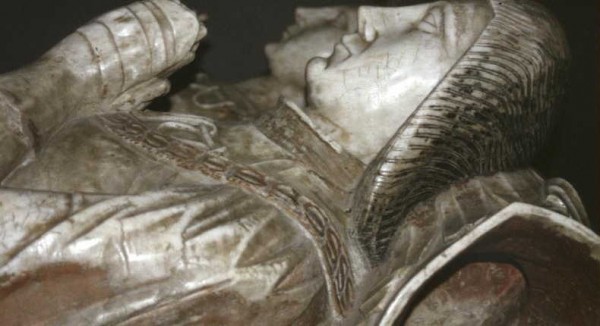Social display and political power in Tudor England
Effie Law | January 17, 2012
One of the aims of the history group is to think about what impact the Howard tombs and other symbols of the family’s power and identity would have had on their contemporaries. Sixteenth-century viewers were sensitive to the relationship between material display, social status and political power. Mighty people should live magnificently, but excessive magnificence suggested pride or fatal ambition.
I have been thinking about these issues on the context of another group in Tudor society. I am working on a book on Henry VII’s ‘New Men’, the low-born lawyers, financial officials and courtiers who helped him assert royal power over England in the wake of the Wars of the Roses. You can read more about them in my article in January’s issue of Total Politics Magazine (http://www.totalpolitics.com/).
I am reflecting on the relationship between social display and political power in their careers for a conference paper in Edinburgh at the end of this month. The conference is called Kings, Lords and Men in Scotland and Britain, 1400-1625: A Tribute to the Work of Jenny Wormald (http://www.shc.ed.ac.uk/conferences/jennyfest/). What I want to explore is how the need to exercise social influence and political power in governing the country required the New Men to build big houses, exercise lavish hospitality, endow local charities and dress in luxury clothes, but how some contemporaries criticised this behaviour as inappropriate for men who were not born to be nobles.
There is evidence of what the New Men did in their surviving houses and tombs, like those of Sir Henry Marney at Layer Marney in Essex or Sir John Mordaunt at Turvey in Bedfordshire. There is also much to be found in their household accounts and the inventories of their goods. Sir Thomas Lovell’s household got through more than a thousand gallons of wine a year and perhaps ten thousand of ale and beer. Edmund Dudley wore hardly any jackets and gowns that did not have silk in them, and even had one doublet in purple, a colour normally reserved for royalty.
Evidence of reactions to the way they lived is harder to find, but invaluable comment comes from the attack on two of them, Empson and Dudley, following Henry VII’s death. Dudley was said to be ‘so proud that the best duke in this land was more easy to sue and to speak to, than he was’. Empson was mocked as a ‘counterfeit gentleman’ full of ‘pride and covetise’ who feasted at a table ‘fatly garnished’ with ‘briby presents’. Nobody thought quite like that about the Howards – they were, after all, good contenders for the title of ‘the best duke in this land’ – but did some people think that even they sometimes overreached themselves?
